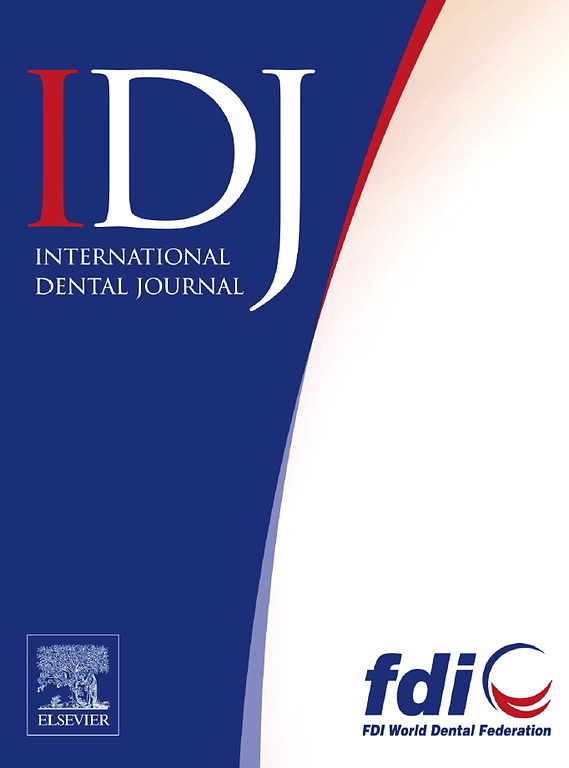人工智能软件在牙冠设计中的功效比较:体外研究
IF 3.2
3区 医学
Q1 DENTISTRY, ORAL SURGERY & MEDICINE
引用次数: 0
摘要
导言和目的:人工智能(AI)已被应用于牙科修复领域。本研究旨在评估两种人工智能软件与传统计算机辅助设计软件相比,所设计牙冠的时间效率和形态准确性:方法:标准组共涉及 33 个临床适应的后牙冠。AI Automate(AA)和AI Dentbird Crown(AD)使用了两种AI驱动的设计软件,而计算机辅助经验者和计算机辅助新手使用了Exocad DentalCAD软件。人工智能驱动组和计算机辅助组之间的时间效率是通过评估耗时来评估的。形态准确性通过三维几何计算进行评估,并将均方根误差与标准组进行比较。统计分析采用 Kruskal-Wallis 检验(α = 0.05):结果:人工智能辅助组的时间效率明显高于计算机辅助组(P < .01)。此外,AA 组和 AD 组的工作时间仅为计算机辅助新手组的四分之一。四组在咬合面和远端面的形态准确性上存在明显差异(P < .05)。在咬合面上,AD 组的准确度低于其他三组(P < .001),而在远端面上,计算机辅助经验组的准确度高于 AA 组(P = .029)。然而,四组之间在中面和边缘线的形态准确性上没有明显差异(P > .05):结论:由人工智能驱动的软件提高了牙冠设计的效率,但与使用计算机辅助软件的经验丰富的技师相比,其形态准确性并不突出。人工智能软件需要进一步研究和广泛的深度学习,以提高牙冠设计的形态准确性和稳定性。本文章由计算机程序翻译,如有差异,请以英文原文为准。
Comparison of the Efficacy of Artificial Intelligence-Powered Software in Crown Design: An In Vitro Study
Introduction and aims
Artificial intelligence (AI) has been adopted in the field of dental restoration. This study aimed to evaluate the time efficiency and morphological accuracy of crowns designed by two AI-powered software programs in comparison with conventional computer-aided design software.
Methods
A total of 33 clinically adapted posterior crowns were involved in the standard group. AI Automate (AA) and AI Dentbird Crown (AD) used two AI-powered design software programs, while the computer-aided experienced and computer-aided novice employed the Exocad DentalCAD software. Time efficiency between the AI-powered groups and computer-aided groups was evaluated by assessing the elapsed time. Morphological accuracy was assessed by means of three-dimensional geometric calculations, with the root-mean-square error compared against the standard group. Statistical analysis was conducted via the Kruskal–Wallis test (α = 0.05).
Results
The time efficiency of the AI-powered groups was significantly higher than that of the computer-aided groups (P < .01). Moreover, the working time for both AA and AD groups was only one-quarter of that for the computer-aided novice group. Four groups significantly differed in morphological accuracy for occlusal and distal surfaces (P < .05). The AD group performed lower accuracy than the other three groups on the occlusal surfaces (P < .001) and the computer-aided experienced group was superior to the AA group in terms of accuracy on the distal surfaces (P = .029). However, morphological accuracy showed no significant difference among the four groups for mesial surfaces and margin lines (P > .05).
Conclusion
AI-powered software enhanced the efficiency of crown design but failed to excel at morphological accuracy compared with experienced technicians using computer-aided software. AI-powered software requires further research and extensive deep learning to improve the morphological accuracy and stability of the crown design.
求助全文
通过发布文献求助,成功后即可免费获取论文全文。
去求助
来源期刊

International dental journal
医学-牙科与口腔外科
CiteScore
4.80
自引率
6.10%
发文量
159
审稿时长
63 days
期刊介绍:
The International Dental Journal features peer-reviewed, scientific articles relevant to international oral health issues, as well as practical, informative articles aimed at clinicians.
 求助内容:
求助内容: 应助结果提醒方式:
应助结果提醒方式:


